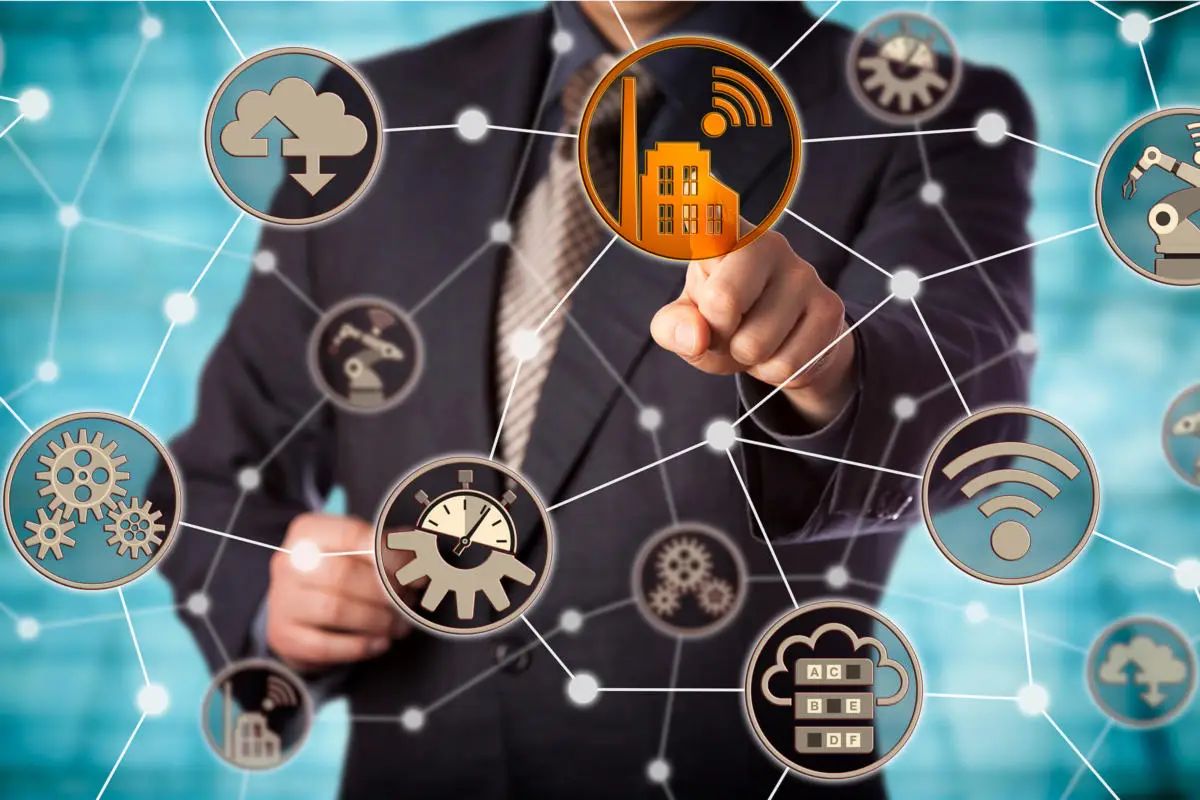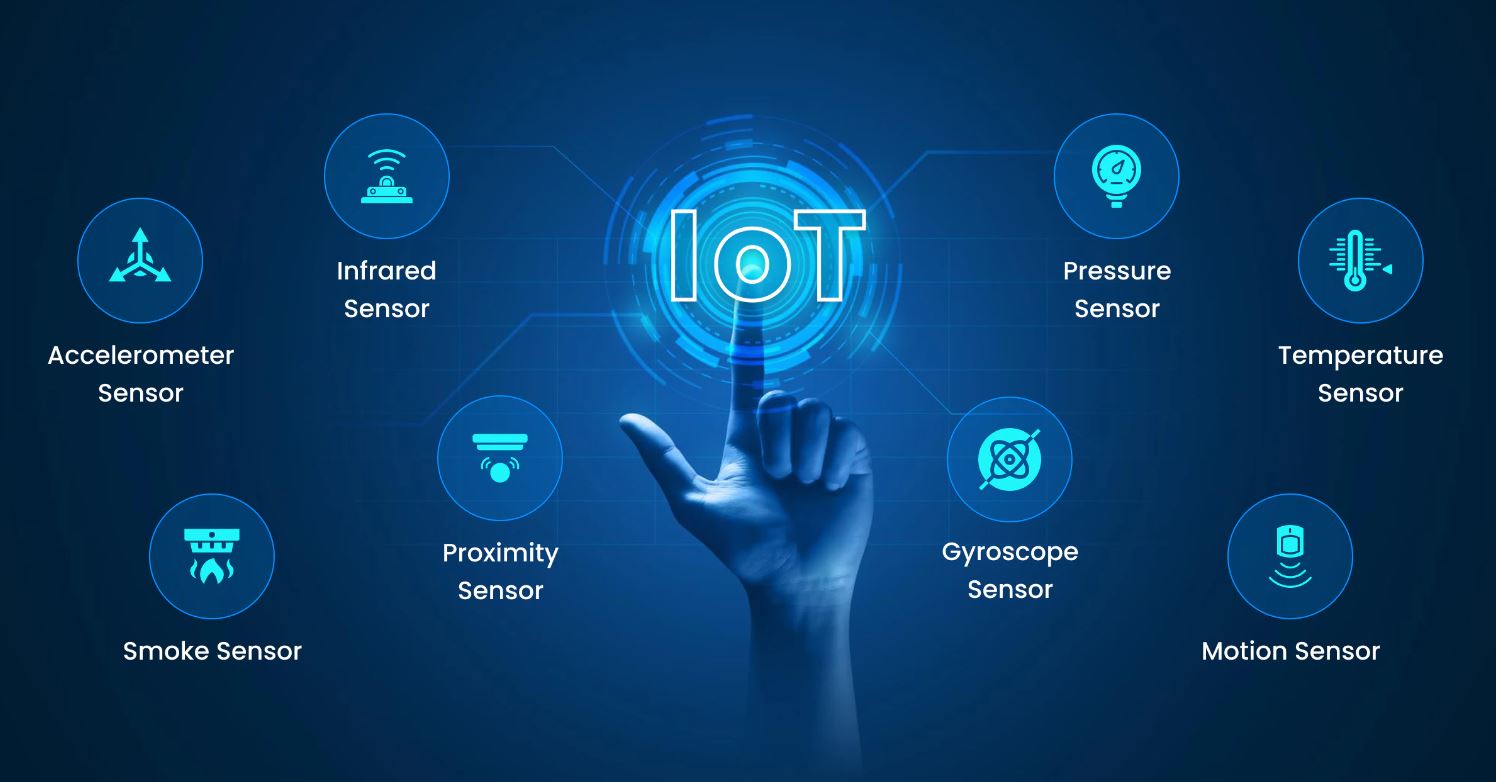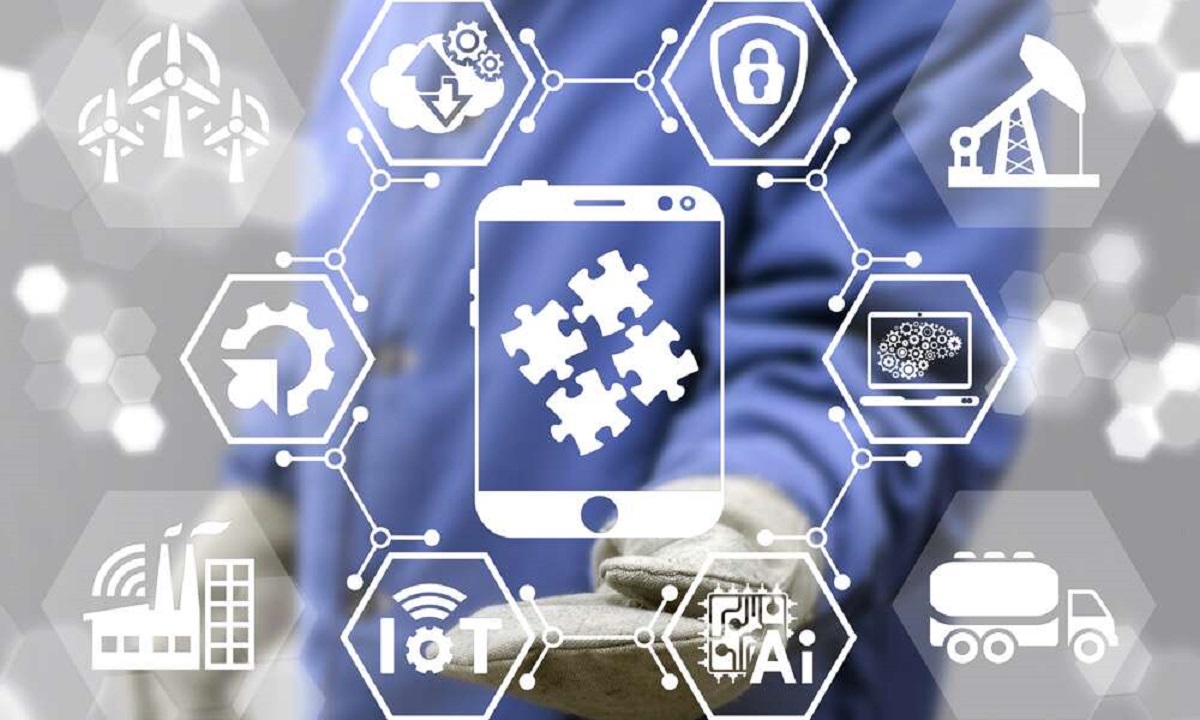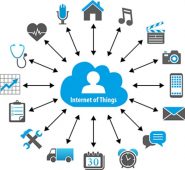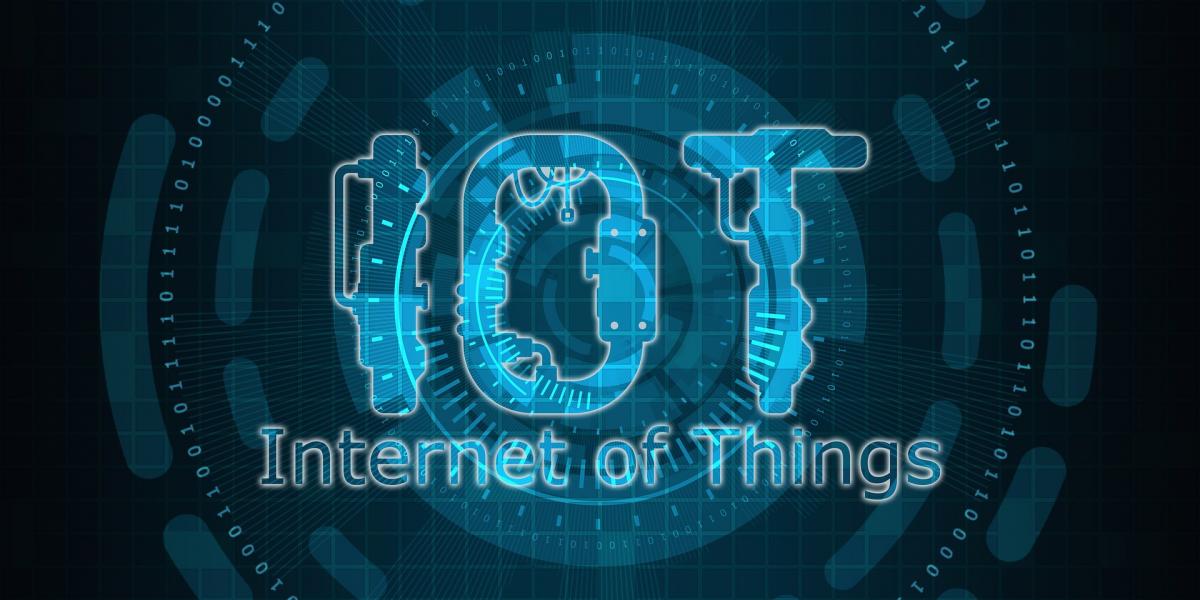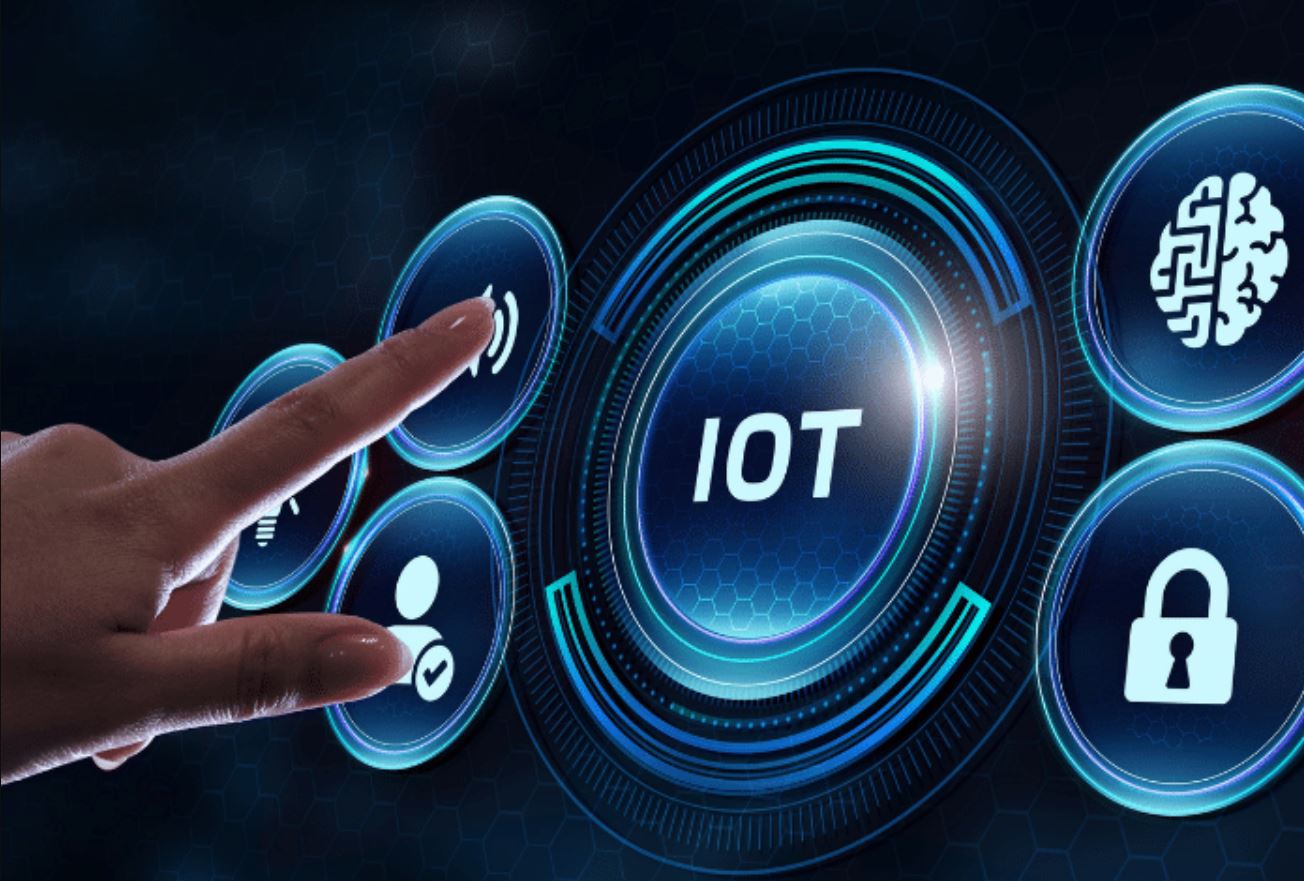Introduction
Welcome to the fascinating world of Machine-to-Machine (M2M) Internet of Things (IoT)! In today’s interconnected world, where technology plays a central role in our lives, M2M IoT has emerged as a game-changer. It has transformed the way devices and systems communicate with each other, opening up a myriad of possibilities.
M2M IoT refers to the interconnection and exchange of information between various devices, without requiring human intervention. This revolutionary technology enables smart and automated communication, paving the way for a more efficient and connected world.
At its core, M2M IoT enables devices to collect and transmit data to a central hub or platform, where it is processed and analyzed. This data exchange allows for remote monitoring, control, and management of devices and systems, leading to increased efficiency, productivity, and enhanced decision-making capabilities.
The beauty of M2M IoT lies in its ability to connect diverse devices and systems, regardless of their location or type. From industrial machinery to healthcare devices, from smart homes to automobiles, the applications of M2M IoT are virtually limitless. With the exponential growth of connected devices, M2M IoT is poised to revolutionize industries across the board.
In this article, we will delve deeper into the world of M2M IoT, exploring its key components, benefits, challenges, and applications. We will also distinguish M2M IoT from Consumer IoT, highlighting the key differences between the two. So, let’s embark on this exciting journey to uncover the transformative power of M2M IoT!
Definition of M2M IoT
Machine-to-Machine (M2M) Internet of Things (IoT) is a technological infrastructure that enables seamless communication and data exchange between interconnected devices, without the need for human involvement. In simpler terms, it allows machines to communicate and collaborate with each other, sharing information and performing tasks autonomously.
M2M IoT can be understood as a network of interconnected devices, sensors, and systems that work together to collect, analyze, and act upon data. These devices, often referred to as “smart” devices, are equipped with sensors, processors, and connectivity capabilities that enable them to gather information and transmit it to a centralized platform or cloud system.
Through M2M IoT, devices can collect a wide range of data, including temperature, humidity, location, speed, and much more. This data is then transmitted and processed in real-time, enabling organizations to gain valuable insights, make informed decisions, and automate processes.
What sets M2M IoT apart from traditional machine-to-machine communication is its integration with the internet and cloud-based systems. This connectivity allows for the seamless and efficient exchange of data between devices located in different geographic locations.
In the M2M IoT ecosystem, devices communicate using various communication protocols, such as Wi-Fi, Bluetooth, cellular networks, or even satellite connectivity. These communication channels ensure that data is transmitted securely and reliably, maintaining a continuous flow of information.
M2M IoT has expanded the horizons of automation and connectivity, enabling organizations to optimize operations, reduce costs, enhance productivity, and improve customer experiences. From industrial automation to healthcare monitoring, from smart cities to agriculture, M2M IoT is revolutionizing numerous sectors and opening up new possibilities for innovation.
In the following sections, we will explore in detail how M2M IoT works, the key components involved, and the benefits it brings to various industries.
How M2M IoT Works
Machine-to-Machine (M2M) Internet of Things (IoT) operates on a complex yet efficient framework that enables devices to communicate and share data seamlessly. Let’s take a closer look at the key components and steps involved in the functioning of M2M IoT.
Sensors and Data Collection: M2M IoT begins with the deployment of sensors or smart devices capable of collecting relevant data. These sensors can range from simple temperature or motion sensors to more sophisticated devices that can measure variables such as pressure, humidity, or even environmental conditions.
Connectivity: Once the data is collected, the next step is to establish connectivity between the devices. This can be achieved through various communication protocols, including Wi-Fi, Bluetooth, cellular networks, or even satellite technology. The choice of connectivity largely depends on the distance between the devices and the desired data transfer speeds.
Data Transmission: Once the devices are connected, the collected data needs to be transmitted to a centralized platform or cloud-based system. This can be done using secure transmission protocols to ensure the privacy and integrity of the data being exchanged.
Data Processing and Analysis: Upon reaching the centralized platform or cloud, the collected data undergoes processing and analysis. Through sophisticated algorithms and data analytics tools, the raw data is transformed into valuable insights. This analysis helps organizations gain a better understanding of patterns, trends, and anomalies, enabling them to make informed decisions and take appropriate actions.
Decision-Making and Automation: Based on the insights derived from data analysis, organizations can implement automated systems or trigger specific actions. For example, in industrial settings, certain machines can be automatically switched off or adjusted based on real-time data, optimizing operations and reducing downtime.
Feedback Loop: M2M IoT operates in a continuous feedback loop. As devices collect more data and the system evolves, the insights gained from data analysis feed back into the system, allowing for further optimization and improvement. This continuous improvement process ensures that the M2M IoT ecosystem remains efficient and responsive to changing conditions.
Overall, the functioning of M2M IoT involves a seamless integration of sensors, connectivity, data transmission, processing, analysis, and decision-making. This interconnected ecosystem enables devices to communicate, collaborate, and automate tasks, leading to improved efficiency, productivity, and ultimately, better outcomes for businesses and individuals alike.
Key Components of M2M IoT
Machine-to-Machine (M2M) Internet of Things (IoT) comprises several essential components that work together to create a seamless and interconnected system. Understanding these key components is crucial to comprehend the functioning of M2M IoT. Let’s explore these components in detail:
Devices or Sensors: Devices or sensors are the building blocks of M2M IoT. These smart devices are equipped with various sensors that can collect data, such as temperature, humidity, pressure, or location. These devices can be anything from industrial machines to wearable health monitors, from smart home appliances to vehicle tracking systems.
Connectivity: Connectivity forms the backbone of M2M IoT. It includes various types of connections, such as Wi-Fi, Bluetooth, cellular networks, or satellite. The choice of connectivity depends on factors like distance, data transfer speed, and security requirements.
Communication Protocols: Communication protocols determine how devices in the M2M IoT network communicate with each other. It ensures that data is transmitted securely and efficiently. Common protocols used in M2M IoT include MQTT (Message Queuing Telemetry Transport), CoAP (Constrained Application Protocol), and HTTP (Hypertext Transfer Protocol).
Gateways: Gateways act as intermediaries between devices and the central platform or cloud. They enable the aggregation and translation of data from different devices with various protocols into a unified format. Gateways also provide additional security measures, such as encryption and authentication, to protect the data being transmitted.
Central Platform or Cloud: The central platform or cloud is where data from connected devices is stored, processed, and analyzed. It serves as a centralized hub that enables real-time monitoring, data management, and advanced analytics. This platform facilitates data-driven decision-making and provides valuable insights to organizations.
Data Analytics: Data analytics plays a crucial role in M2M IoT. Through sophisticated algorithms and data analysis techniques, raw data is transformed into meaningful insights. These insights help organizations identify patterns, trends, and anomalies, enabling them to optimize operations, detect issues, and make informed decisions.
Security Measures: Security is of utmost importance in M2M IoT. As data is transmitted across networks, it needs to be protected from unauthorized access or tampering. Robust security measures, including encryption, secure authentication, and access control, are implemented to safeguard the confidentiality and integrity of data.
User Interfaces: User interfaces provide a means for users to interact with the M2M IoT system. This can be through web-based dashboards, mobile applications, or dedicated control panels. User interfaces enable users to monitor device status, set parameters, and receive alerts or notifications.
These key components work in tandem to create a robust and interconnected M2M IoT ecosystem. Each component plays a critical role in ensuring the smooth flow of data, efficient communication between devices, and effective decision-making based on insights derived from data analysis.
Benefits of M2M IoT
Machine-to-Machine (M2M) Internet of Things (IoT) offers numerous benefits across various industries and sectors. Let’s explore the key advantages that organizations and individuals can gain from adopting M2M IoT:
Efficiency and Productivity: M2M IoT enables automation and real-time monitoring, leading to increased efficiency and productivity. Tasks that were previously done manually can now be automated, eliminating human error and reducing operational costs. With M2M IoT, organizations can optimize processes, track performance, and streamline workflows.
Cost Savings: M2M IoT can significantly reduce costs for businesses. By automating tasks, optimizing energy usage, and predicting maintenance needs, organizations can minimize downtime, prolong the lifespan of equipment, and save on operational expenses. M2M IoT also enables predictive maintenance, ensuring timely repairs and avoiding costly breakdowns.
Data-Driven Insights: With M2M IoT, organizations can collect vast amounts of data from connected devices. Through advanced analytics, they can derive valuable insights and make data-driven decisions. These insights help businesses understand customer behavior, improve product development, optimize supply chains, and identify new revenue opportunities.
Improved Decision-Making: M2M IoT provides real-time data that enables organizations to make informed decisions quickly. With access to accurate and up-to-date information, businesses can respond promptly to changing market conditions, optimize strategies, and stay ahead of the competition. Real-time insights also help in risk assessment and mitigation.
Enhanced Customer Experience: M2M IoT enables businesses to deliver better customer experiences. Through connected devices and sensors, organizations can proactively monitor and anticipate customer needs. This allows for personalized services, faster response times, and improved customer satisfaction. For example, in the healthcare sector, remote monitoring devices enable patients to receive personalized care from the comfort of their homes.
Increased Safety and Security: M2M IoT enhances safety and security measures in various industries. With real-time monitoring and predictive analytics, organizations can identify potential risks, monitor critical parameters, and respond swiftly to emergencies. M2M IoT also enables remote surveillance and access control, improving safety in environments such as factories, warehouses, and public spaces.
Sustainable Practices: M2M IoT contributes to sustainability by optimizing resource usage and reducing waste. With intelligent systems, organizations can efficiently manage energy consumption, monitor emissions, and implement eco-friendly practices. Automatic data collection and analysis enable organizations to identify energy-saving opportunities and implement sustainable strategies.
Scalability and Flexibility: M2M IoT provides scalability and flexibility to accommodate the growing demands of businesses. The modular nature of M2M IoT allows organizations to add or remove devices as needed, expanding or adjusting their IoT ecosystem. This scalability enables businesses to adapt to changing market needs and seize new opportunities.
The benefits of M2M IoT extend across industries, revolutionizing processes, empowering decision-making, and improving overall performance. As organizations embrace the transformative power of M2M IoT, they can unlock new levels of efficiency, productivity, and innovation.
Applications of M2M IoT
Machine-to-Machine (M2M) Internet of Things (IoT) has a wide range of applications across various industries, transforming the way businesses operate and individuals interact with technology. Let’s explore some of the key applications of M2M IoT:
Industrial Automation and Manufacturing: M2M IoT revolutionizes industrial automation, enabling real-time monitoring, predictive maintenance, and streamlined operations. Connected sensors and devices gather data from machines, ensuring optimal performance, reducing downtime, and improving overall efficiency. M2M IoT also facilitates supply chain optimization, inventory management, and quality control.
Smart Healthcare: M2M IoT is reshaping the healthcare industry, improving patient care, and enabling remote health monitoring. Connected devices and wearables track vital signs, collect patient data, and transmit it to healthcare providers in real-time. This allows for proactive interventions, personalized treatments, and enhanced patient outcomes. M2M IoT also enables the efficient management of medical devices, ensuring their proper functioning and maintenance.
Smart Cities: M2M IoT plays a significant role in creating smart and sustainable cities. Connected streetlights, waste management systems, and traffic control systems optimize resource usage, reduce energy consumption, and enhance public safety. M2M IoT enables accurate monitoring of urban infrastructure, predicting and addressing issues promptly, and providing citizens with enhanced services and improved quality of life.
Agriculture and Farming: M2M IoT transforms agriculture, making it smarter and more efficient. Connected sensors monitor soil moisture, temperature, and nutrient levels, enabling precise irrigation and fertilization. M2M IoT also facilitates automated machinery, such as robotic harvesters and smart drones, ensuring precision farming, optimizing crop yield, and reducing waste.
Transportation and Logistics: M2M IoT enhances transportation and logistics operations by providing real-time tracking and monitoring of vehicles, shipments, and delivery routes. Connected devices enable fleet management, optimizing fuel consumption, reducing maintenance costs, and improving logistics efficiency. M2M IoT also enhances supply chain visibility, enabling organizations to monitor inventory levels, track shipments, and ensure timely delivery.
Smart Energy Management: M2M IoT enables intelligent energy management, optimizing power usage, and reducing energy waste. Connected devices monitor and control energy consumption in homes, buildings, and industrial facilities. M2M IoT facilitates demand-response systems, allowing automatic adjustment of energy usage based on grid demands, promoting energy efficiency, and reducing peak load demand.
Environmental Monitoring: M2M IoT enables real-time monitoring of environmental parameters, such as air quality, water quality, and weather conditions. Connected sensors collect data and send it to monitoring systems, allowing organizations and authorities to take timely actions for pollution control, resource conservation, and disaster management.
Retail and Customer Engagement: M2M IoT enhances customer engagement in the retail sector through personalized experiences. Connected devices, such as beacons, gather customer data, enabling targeted marketing campaigns and personalized recommendations. M2M IoT also facilitates inventory management, ensuring efficient stock replenishment and reducing out-of-stock situations.
These are just a few examples of the diverse applications of M2M IoT. As technology continues to advance, the potential for leveraging M2M IoT across industries is limitless. From improving operational efficiency to enhancing quality of life, M2M IoT is revolutionizing the way we live, work, and interact with our environment.
Challenges and Considerations of M2M IoT
While Machine-to-Machine (M2M) Internet of Things (IoT) offers immense potential, there are several challenges and considerations that organizations need to address when implementing M2M IoT solutions. Let’s explore some of the key challenges and considerations:
Security and Privacy: With the increased connectivity and data exchange in M2M IoT, security and privacy become critical concerns. Organizations must implement robust security measures to protect sensitive data from unauthorized access or cyber-attacks. Encryption, authentication, and secure data transmission protocols are essential to ensure the integrity and confidentiality of M2M IoT systems.
Interoperability: The interoperability of devices and systems is crucial for the successful implementation of M2M IoT. As various devices may use different communication protocols and standards, ensuring seamless communication and compatibility between devices can be a significant challenge. Standardization efforts and the use of open APIs (Application Programming Interfaces) help address this challenge.
Data Management and Analytics: M2M IoT generates vast amounts of data that need to be efficiently managed and analyzed. Organizations must have robust data storage infrastructure and analytics capabilities in place to make sense of the collected data. This involves data cleansing, data integration, and data analytics techniques to derive valuable insights and make informed decisions.
Reliability and Scalability: M2M IoT systems need to be reliable and scalable to support a growing number of connected devices and handle large volumes of data. It is crucial to have a robust infrastructure that can handle the increasing demands of M2M IoT operations. Redundancy measures, backup systems, and load balancing mechanisms help ensure system reliability and scalability.
Power Consumption and Battery Life: Many M2M IoT devices operate on battery power, making power consumption and battery life critical considerations. Organizations must optimize device power usage to prolong battery life and ensure uninterrupted operation. Techniques such as energy harvesting, low-power wireless communication, and efficient power management strategies help mitigate power consumption challenges.
Legal and Regulatory Compliance: Organizations must adhere to legal and regulatory requirements when implementing M2M IoT solutions. Data privacy regulations, security standards, and intellectual property rights need to be considered to ensure compliance. It is essential to have proper consent mechanisms, data handling practices, and compliance with local regulations to protect consumer rights and maintain trust.
Integration with Legacy Systems: Many organizations already have existing legacy systems in place that need to be integrated with M2M IoT solutions. Integration challenges can arise due to different protocols, data formats, and system architectures. Organizations must carefully plan and execute the integration process to ensure seamless connectivity and data flow between legacy systems and M2M IoT components.
Costs and Return on Investment: Implementing M2M IoT solutions involves upfront costs, including hardware, connectivity, and system integration. Organizations must carefully evaluate the costs and potential return on investment to justify the adoption of M2M IoT. Factors such as improved operational efficiency, cost savings, and revenue generation potential should be considered when assessing the financial viability and long-term benefits of M2M IoT implementations.
By addressing these challenges and considerations, organizations can maximize the benefits of M2M IoT while mitigating potential risks. Proper planning, collaboration with stakeholders, and ongoing vigilance are essential to ensure successful deployment and utilization of M2M IoT solutions.
M2M IoT vs. Consumer IoT
Machine-to-Machine (M2M) Internet of Things (IoT) and Consumer IoT are two interconnected but distinct concepts within the broader IoT framework. While both involve interconnecting devices and enabling communication, there are key differences between M2M IoT and Consumer IoT. Let’s explore these differences:
Focus and Use Cases: M2M IoT primarily focuses on the interconnection and communication of devices and systems in industrial and commercial settings. It aims to optimize operational efficiency, automate processes, and enable data-driven decision-making. On the other hand, Consumer IoT is more consumer-centric, focusing on enhancing everyday life with smart devices and connected home solutions. Examples of Consumer IoT include smart home devices like thermostats, security systems, and voice assistants.
Scale and Complexity: M2M IoT typically involves large-scale deployments with a higher number of devices and complex networking architecture. In industrial settings, M2M IoT can encompass thousands of devices, sensors, and systems spread across multiple locations. Consumer IoT, on the other hand, usually involves a smaller number of devices within homes or personal spaces, with simpler networking requirements.
Ownership and Control: In M2M IoT, the devices and systems are typically owned and controlled by organizations or enterprises. These devices are integrated into larger infrastructures and are often utilized for specific business purposes. In contrast, Consumer IoT devices are individually owned and controlled by consumers, providing them with personalized control and convenience in their daily lives.
Data Sensitivity: M2M IoT often deals with sensitive data related to industrial processes, operations, and critical infrastructure. This requires higher security measures to protect against unauthorized access, data breaches, and cyber threats. Consumer IoT, while also requiring security, typically deals with less sensitive personal data such as preferences, usage patterns, and personal routines.
Interoperability: Interoperability is crucial for both M2M IoT and Consumer IoT. However, M2M IoT typically involves integrating diverse legacy systems, industrial machinery, and complex protocols, making interoperability more challenging. Conversely, Consumer IoT devices often rely on standardized communication protocols and platforms, enabling easier integration and interoperability between devices from different manufacturers.
Data Ownership and Monetization: In M2M IoT, data ownership is primarily with the organization or enterprise implementing the system. The collected data is often used for business intelligence, process optimization, and improving efficiency. In Consumer IoT, there is a greater emphasis on individual data ownership and control. However, consumer data often holds value to companies for targeted marketing, product improvement, and personalized services.
Impact and Industry Applications: M2M IoT has a significant impact on industries such as manufacturing, logistics, healthcare, energy, and agriculture. It enables optimized processes, remote monitoring, predictive maintenance, and improved productivity. Consumer IoT, on the other hand, has a broader impact on daily life, enhancing convenience, comfort, and personalization in areas such as home automation, health monitoring, entertainment, and wearables.
While M2M IoT and Consumer IoT share common foundations, they have distinct characteristics and applications. Understanding the differences can help organizations and individuals better leverage the potential of both M2M IoT and Consumer IoT for their specific needs and goals.
Conclusion
Machine-to-Machine (M2M) Internet of Things (IoT) has transformed the way devices communicate, collaborate, and automate tasks in various industries. With its seamless connectivity and data exchange capabilities, M2M IoT offers immense benefits, including improved efficiency, cost savings, data-driven insights, and enhanced customer experiences.
Throughout this article, we have explored the definition and working of M2M IoT, its key components, and the numerous applications it offers across industries. We have also discussed the challenges and considerations that organizations must address when implementing M2M IoT solutions.
M2M IoT, with its ability to collect and analyze real-time data, enables organizations to make data-driven decisions and optimize their operations. From industrial automation to healthcare monitoring, from smart cities to agriculture, M2M IoT is revolutionizing industries and opening up new possibilities for innovation and growth.
However, the adoption of M2M IoT also brings about challenges that must be overcome, such as security concerns, interoperability, and data management. Organizations need to ensure that appropriate security measures are in place, and robust infrastructure is established to support the scalability and reliability of M2M IoT systems.
In addition, it is important to recognize the differences between M2M IoT and Consumer IoT, as they cater to different use cases and involve varying levels of complexity, data sensitivity, and ownership considerations.
As technology continues to advance, the potential of M2M IoT will only grow. Organizations that embrace this transformative technology and overcome the challenges associated with it will be well-positioned to optimize their processes, innovate new solutions, and gain a competitive edge in the marketplace.
In conclusion, M2M IoT is a powerful and revolutionary concept that holds immense potential for industries and individuals. By harnessing the capabilities of M2M IoT, we can create a more connected and efficient world, where devices seamlessly communicate, collaborate, and automate tasks, ultimately improving our lives and transforming businesses.









